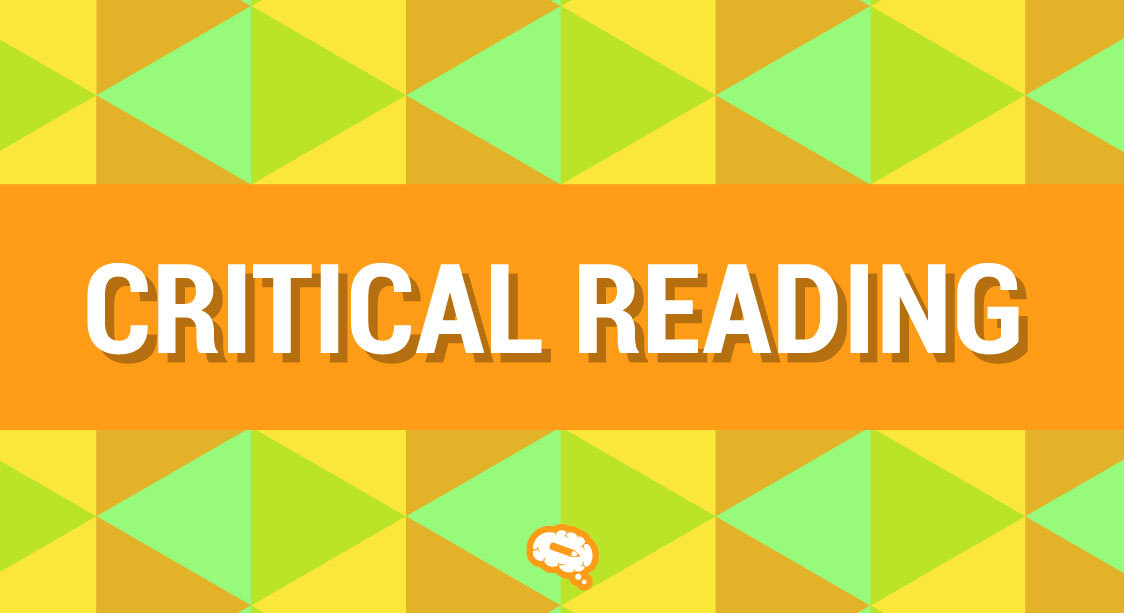In today’s world, the way we present ideas and data can shape opinions, influence decisions, and impact the world around us. One of the most important principles of communication is objectivity. Objective writing is writing that presents information in a neutral and unbiased way. This means avoiding personal opinions, beliefs, or biases. It also means avoiding using emotional language or making subjective statements. Objective writing is typically clearer and easier to understand than subjective writing. It is also seen as more credible and trustworthy. This is because readers know that the writer is not trying to persuade them or influence their opinions.
Related article: Mastering Critical Reading: Uncover The Art Of Analyzing Texts
In a world where there is so much information available, it is more important than ever to be able to distinguish between objective and subjective writing. Objective writing is essential for fostering critical thinking and making informed decisions. This article will explore the importance of objective writing and its role in communication. We will look at how objective writing can be used to foster credibility, deliver accurate information, and promote critical thinking.
What Is Objective Writing?
Objective writing is a style of writing that presents information in a neutral and unbiased manner, without expressing personal opinions, emotions, or beliefs. The primary goal of objective writing is to provide facts, evidence, and logical reasoning to inform the reader without trying to persuade or influence their opinion.
About the question “What is objective writing?”, the author, in this kind of writing, strives to eliminate any potential bias, avoid making value judgments, and maintain a professional and impartial tone. This type of writing is commonly used in news reporting, scientific research papers, academic essays, and other forms of non-fiction writing.
Benefits Of Writing Objectively
Clarity and Understanding: Objective writing presents information in a clear and unbiased manner, allowing readers to conceive the facts without being influenced by the writer’s personal opinions or emotions. This promotes a deeper understanding of the subject matter.
Credibility and Trustworthiness: Objective writing enhances the credibility of the writer and the content. When information is presented without bias, readers are more likely to trust the accuracy and reliability of the material.
Unbiased Evaluation: Objectivity enables fair evaluation of different viewpoints, arguments, and evidence. It allows readers to form their own opinions based on the presented facts, rather than being persuaded by the writer’s subjective views.
Professionalism in Academic and Formal Writing: In academic and formal settings, objective writing is expected as it upholds the standards of professionalism and integrity in research, essays, and reports.
Conflict Resolution: Objective writing is particularly valuable in discussions and debates, as it helps to reduce conflicts by focusing on facts rather than personal feelings or biases.
Avoiding Stereotypes and Prejudices: Writing objectively helps to avoid reinforcing stereotypes and prejudices, promoting a more inclusive and open-minded perspective.
Enhanced Critical Thinking: By analyzing information objectively, writers and readers can engage in deeper critical thinking, questioning assumptions, and considering alternative viewpoints.
Appropriate in Scientific and Technical Fields: In scientific and technical writing, objectivity is essential to maintain the accuracy and validity of research findings and technical information.
Global Audience Accessibility: Objective writing is more accessible to a diverse global audience, as it transcends cultural and individual differences, making the content relevant to a broader readership.
Ethical Reporting: Journalists and reporters strive for objectivity in their news reporting to provide unbiased and truthful information to the public, upholding ethical standards in journalism.
Overall, writing objectively fosters transparency, fairness, and respect for differing perspectives, contributing to more informed, trustworthy, and inclusive communication.
Subjectivity Writing
Subjectivity and objectivity are two fundamental aspects of writing that influence how information is presented and perceived. Subjectivity refers to the presence of personal opinions, feelings, and biases in writing. It involves the writer’s perspective, emotions, and interpretations, which can impact how they convey information to the reader.
What Is Subjective Writing?
Subjective writing is a style of writing where the author expresses their personal opinions, emotions, and viewpoints on a particular subject. In subjective writing, the author’s feelings, beliefs, and individual experiences play a significant role in shaping the content. This type of writing often uses first-person pronouns, such as “I” or “we,” and employs emotional language to convey the author’s thoughts and emotions.
Subjective writing is prevalent in creative writing, personal essays, memoirs, and certain types of journalistic pieces, such as opinion columns or editorials. It allows writers to connect with the reader on a more personal level, sharing their unique perspectives and inviting the audience to empathize with their point of view.
The Difference Between Objective And Subjective Writing
It’s essential to recognize that both objective and subjective writing have their place in various contexts. Objective writing provides factual information and encourages critical thinking, while subjective writing allows for self-expression and emotional engagement. The choice between the two depends on the writer’s intentions, the subject matter, and the target audience.
Understanding the difference between objective and subjective writing enables writers to choose the appropriate style based on their intended purpose and the expectations of their audience. It also empowers readers to identify when they are encountering subjective content and approach it with a discerning mindset, acknowledging the presence of the author’s perspective.
| Aspect | Objective Writing | Subjective Writing |
|---|---|---|
| Tone | Neutral and impartial | Personal and emotional |
| Perspective | Third-person or no personal pronouns | First-person and personal pronouns |
| Bias | Minimizes or eliminates bias | Embraces author’s bias |
| Purpose | Inform and present facts | Express opinions and emotions |
| Use of evidence | Relies on evidence and data | May rely on personal experience |
| Language and style | Formal and professional | Informal and more engaging |
| Common applications | News reporting, scientific writing | Creative writing, personal essays |
| Examples | Textbook, research paper | Opinion column, personal journal |
Elements Of Objective Writing
Objective writing is characterized by its neutral and unbiased approach to presenting information. Writers strive to eliminate personal biases and emotions, focusing on factual accuracy and logical reasoning. Several key elements contribute to achieving objectivity in writing:
Avoiding Personal Pronouns
Objective writing minimizes the use of personal pronouns like “I,” “we,” or “you.” By avoiding these pronouns, the writer maintains a level of distance between themselves and the content, making it less likely for their personal opinions or biases to influence the information presented. Instead of writing, “I believe that,” or “In my opinion,” the objective writer would present the information without explicitly inserting themselves into the narrative. For example, “According to research,” or “Studies indicate that.”
Focusing On Facts, Not Emotions Or Opinions
Objective writing prioritizes the presentation of verifiable facts, evidence, and data over personal emotions or opinions. The writer should refrain from using emotionally charged language or expressing their feelings about the subject matter. Instead, they rely on evidence-based information to support their claims. When presenting an argument or discussing a topic, the focus is on logical reasoning and empirical support rather than emotional persuasion.
Using An Active Voice And Ergative Verbs
The active voice is preferred in objective writing because it clearly identifies the subject and the action they are performing. This contributes to clarity and directness in the writing. In contrast, the passive voice can sometimes be used to obscure responsibility or agency, potentially leading to less objective writing. Ergative verbs, which don’t require an object to complete their meaning, can also help make sentences more concise and focused.
Example (Active Voice): “The committee made the decision.”
Example (Passive Voice): “The decision was made by the committee.”
Referencing Sources For Evidence And Support
Objective writing relies heavily on evidence and support from reputable sources. By referencing and citing authoritative works, research studies, experts, and reliable data, the writer reinforces the credibility of their writing. These citations also allow readers to verify the information independently, adding transparency and accountability to the content.
Maintaining A Neutral Tone In The Writing
A neutral tone is crucial in objective writing. The language used should be professional, impartial, and devoid of emotional bias. The writer should avoid overly positive or negative language that could sway the reader’s perception. Instead, the content should present information objectively, allowing the readers to draw their conclusions based on the facts and evidence provided.
Example (Neutral Tone): “The study findings suggest a correlation between X and Y, according to the researchers’ analysis.”
Common Examples Of Objective Writing
Objective writing fosters transparency, credibility, and the dissemination of reliable information across various domains, contributing to an informed and knowledgeable society. This type of writing has distinct purposes: ensuring clear communication in instruction manuals, providing unbiased information in news reporting, and maintaining scientific rigor in natural science reports.
Instruction Manual
Instruction manuals are a classic example of objective writing. These documents provide step-by-step guidance on how to use a product or perform a specific task. Objective writing in instruction manuals focuses on clarity, precision, and neutrality. It avoids subjective language and personal opinions, instead using concise and straightforward language to ensure readers can follow the instructions accurately. The emphasis is on providing clear directions and information, leaving no room for ambiguity or misinterpretation.
Example (Objective Writing in an Instruction Manual):
“Insert the round end of the cable into the designated port until you hear a click.”
News Reporting
News reporting is one of the primary domains where objective writing is crucial. Journalists aim to present news stories in a fair, accurate, and unbiased manner. Objective news articles provide the who, what, where, when, why, and how of an event without injecting personal opinions or emotions. They rely on credible sources, facts, and verified information to inform the public objectively. While opinion pieces and editorials allow for subjectivity, standard news reporting adheres to objective principles.
Example (Objective News Reporting):
“In a press conference today, the Prime Minister announced new economic measures to address unemployment. The plan includes tax incentives for businesses and increased funding for job training programs.”
Natural Science Reports
Objective writing is a fundamental aspect of scientific reports, particularly in the field of natural sciences. Scientific reports present research findings, experiments, and observations without personal bias or emotional influence. The language used is precise and technical, and statements are supported by empirical evidence and data. Objectivity ensures that other researchers can replicate experiments and validate the conclusions, promoting the advancement of scientific knowledge.
Example (Objective Writing in a Natural Science Report):
“The results of the study show a significant correlation between the increase in temperature and the rate of plant growth. The experiment was conducted over a three-month period, and the data were collected and analyzed using standard statistical methods.”
Browse Through 75,000+ Scientifically Accurate Illustrations In 80+ Popular Fields
Mind the Graph is a valuable platform that aids scientists by providing access to over 75,000 scientifically accurate illustrations in 80+ popular fields. With a user-friendly interface and customizable graphics, researchers can efficiently create visually appealing figures, diagrams, and infographics to enhance their visual communication and effectively convey complex concepts in their publications, presentations, and research materials. The high-quality graphics available on the platform ensure publication-ready visuals, saving time and streamlining the content creation process for scientists across diverse scientific disciplines.

Subscribe to our newsletter
Exclusive high quality content about effective visual
communication in science.







